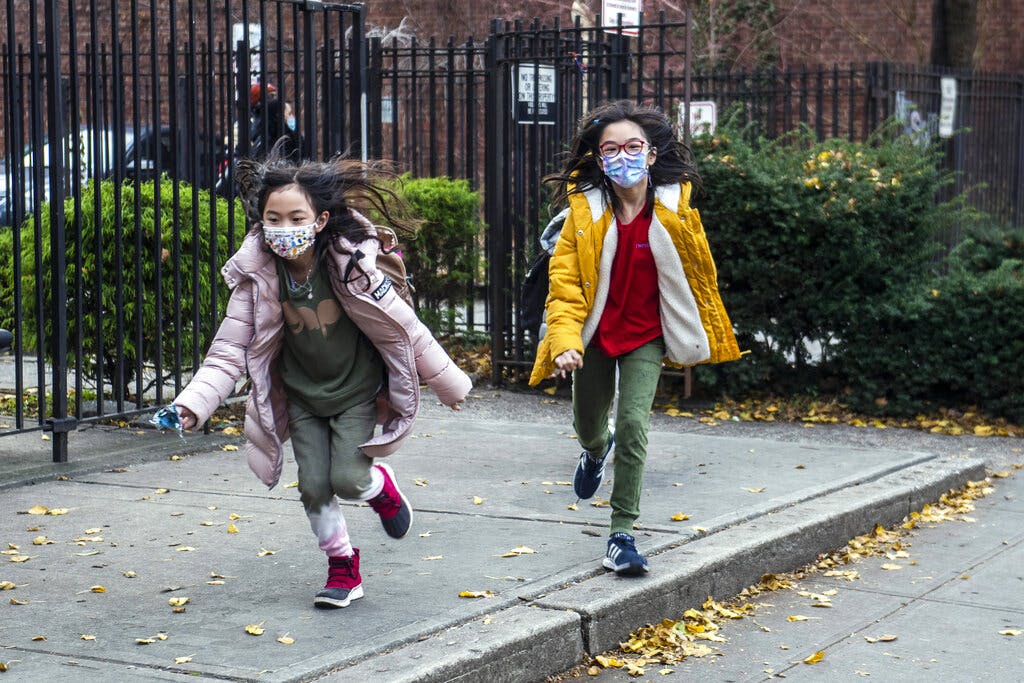Children’s Struggles in Pandemic’s Wake Grow Difficult To Put Into Words
Many are facing profound learning difficulties. One of several pressing issues is mask mandates, which might have enduring ramifications on educational outcomes.

While Covid’s tide appears to be receding, growing evidence demonstrates that for many young children, the effects of the pandemic are far from disappearing. Many are facing profound learning difficulties after the pandemic and the ensuing policy responses, which forced them into social isolation and remote schooling.
Data from across the pond are painting a worrisome picture. The results of a year-long investigation by an organization of education experts and members of parliament to inform government policy, the Times Education Commission, disclose major social and learning difficulties in many elementary school children in the United Kingdom. “The system as a whole is fundamentally failing,” the chairwoman, Rachel Sylvester, writes.
“As we all know, the pandemic was a disaster for children and young people, and not just in terms of lost learning and damage to mental health. The closure of schools during lockdown deepened disparities and widened the attainment gap,” the report says.
America appears to be facing a similar crisis. Copious evidence highlights the damage caused by school disruptions in the United States. A February 2022 study by the curriculum and assessment group Amplify disclosed that a third of students in kindergarten through third grade required major interventions in order to read at grade level by the end of the year.
As economist Thomas Kane’s research has shown, students at high-poverty schools that stayed remote for the majority of the 2020-21 academic year lost the equivalent of 22 weeks of in-person learning.
“This has been a very challenging time academically, socially, and emotionally for children and for adults,” a curriculum developer and Harvard lecturer on education, Katherine Merseth, told the Sun. She explained that preschoolers and elementary school children are highly receptive to their environments, which have undergone drastic changes over the past two years of Covid-19 lockdowns and reopenings.
Ms. Merseth said the pandemic further exposed “the great inequities among children based on race, class, gender, and parental situations.” Developmental issues have occurred along socioeconomic fault lines, as parents with more resources and flexibility were able to deploy outside educational services to their children, while those who had to work could not.
At the same time, schools were scrambling to continue classes amid changing pandemic conditions. “Where many parents rely on the schools to give direction in terms of how to support their children, schools were having a difficult time themselves,” Ms. Merseth said.
For toddlers, the pandemic negatively affected the facility with language that develops under normal interactive circumstances, including literacy- and math-related skills. Without in-school training, these growth trajectories stalled.
The Times report emphasized the importance of preschool education, explaining that “the first thousand days” of a child’s life are crucial to their brain development. Yet some primary school heads in Britain reported having to devote more time to teaching children basic communication skills instead of literacy and numeracy following pandemic disruptions.
“What they’re missing out on — particularly low-income kids from families where the parents are more resource-constrained — is the kind of enrichment activities of a preschool classroom,” a language and literacy development expert, Catherine Snow, said. Activities such as reading, discussing books, and engaging in art and science projects expose children to a wider vocabulary than they might encounter at home.
Additionally, toddlers had fewer opportunities to learn the fundamental skills of sharing, taking turns, and sitting and listening to an adult over the past two years.
Extensive mask wearing might have also impacted young children’s comprehension and production of language.
In 2020, only children over the age of 11 wore masks in the U.K. In the U.S., 2021 was the first school year in which states mandated students wear masks, while the U.K. chose to quarantine and test students, even during Delta variant spikes.
The hotly contested and litigated issue of mask mandates for children, both domestically and abroad, might have enduring ramifications on educational outcomes, especially for those whose primary exposure to oral language is in preschool classes and for non-native English speakers.
“We find it harder to understand people when we don’t have the support of a little bit of lip reading,” Ms. Snow said, explaining that words often sound similar to young children. “Your lips actually look different when you say pat or bat.” Children need to differentiate between these sounds to speak and write properly.
After the publication of the Times report, politicians and education experts across the spectrum said they were emboldened by its findings and plan to substantially invest in early education for the nation’s youth.
“The pandemic, by calling into question almost every aspect of the way things used to be, actually gave us a chance to take stock, to rethink the system from top to bottom,” the commissioners wrote.
Enrollment numbers bring into focus the attrition rates that have affected public schools. In New York City, Mayor Adams decided to reduce public school budgets by $215 million due to lower enrollment rates across the city. Protests ensued at local schools and outside of City Hall, while educational advocates argued that shrunken allocations will require schools to increase class sizes, which could further hinder educational outcomes.
Ms. Snow articulated the balance between maximizing the utility of funding currently available and directing remaining resources when budgets are cut.
“I personally have not been convinced that spending a lot of money on add-on social-emotional learning is a good idea,” Ms. Snow said. “There’s no need to differentiate this teaching from literacy teaching or math teaching when what we’re talking about in small groups is dividing things up and sharing things out.”
Instead, Ms. Snow encourages preschool and primary school programs to embed education on social skills into daily teaching. Group read-alouds of books that explore themes like friendship, sharing, and conflict can serve as collaborative learning opportunities. She also recommends that preschool classrooms devote more attention to studying rhyming amid emerging literacy issues.
Ms. Merseth expressed that part of the solution is to strengthen the relationships in a child’s life, whether with a parent or a teacher. “If a child doesn’t feel cared for, a child’s not going to learn,” she said, quoting an expression often used in the medical profession: “I don’t care how much you know until I know how much you care.”

